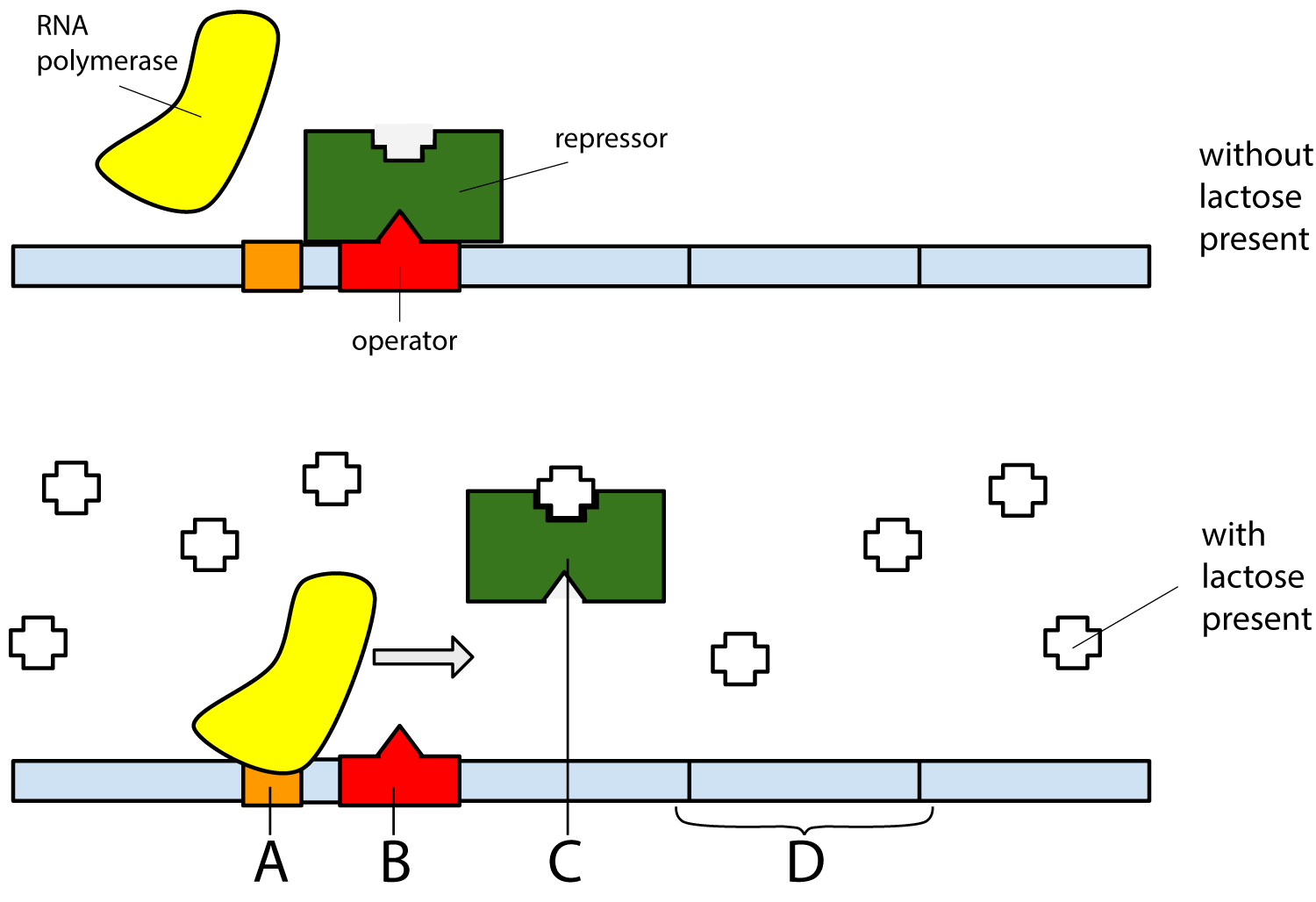Target: 10 questions in 10 minutes |
1. Which of the following is directly involved in controlling gene expression?
| I. DNA replication |
| II. RNA splicing |
| III. mRNA degradation |
| IV. Histone modification |
|
|
- A. I and III only
- B. II and III only
- C. I, II and III only
- D. II, III and IV only
|
|
2. What is the impact of epigenetic changes on gene expression?
- A. To alter the DNA base sequence thus affecting genotype
- B. To change the phenotype without altering the genotype
- C. To prevent translation of proteins
- D. To silence genes permanently
| |
3. This image shows a section of a strand of DNA:

|
|
If the process in the image occurs in the promoter region of a gene, what is the most likely result?
- A. Enhanced the binding of transcription factors
- B. Repressed transcription
- C. Accelerated mRNA degradation
- D. Increased translation efficiency
|
|
4. What is the correct order from smallest to largest in number?
| I. Proteome |
| II. Transcriptome |
| III. Genome (number of genes) |
|
- A. I, II, III
- B. III, I, II
- C. III, II, I
- D. II, III, I
|
|
Q5-7: The image below shows the lac operon in bacteria.

|
T A RAJU
(adapted)
CC-BY-SA 3.0
|
| 5. Which letter A to D shows the promoter region? |
|
| 6. Which letter shows a 3D conformational change in protein structure? | |
7. Which statement is true regarding the lac operon?
- A. It shows an example of allosteric inhibition of an enzyme
- B. It regulates the expression of genes involved in lactose metabolism
- C. It shows an example of hormone regulation of gene expression
- D. It functions as a transcription factor for gene activation
|
|
8. What is/are the reason(s) for the size differences seen in ligers and tigons (lion-tiger hybrids)?
| I. Tigers and lions have different numbers of chromosomes |
| II. Imprinted genes in lion and tiger gametes |
| III. Incomplete removal of all epigenetic tags during gametogenesis |
| IV. Differing social structures |
|
- A. I and II only
- B. I and III only
- C. III and IV only
- D. II, III and IV only
|
|
9. How can the role of environmental stimuli on gene expression be demonstrated using monozygotic twins?
- A. By observing differences in the nucleotide sequences of their DNA
- B. By comparing the methylation patterns of their DNA
- C. By analyzing the variations in their mitochondrial DNA
- D. By examining the differences in their ribosomal RNA
| |
10. How do transcription factors regulate gene expression?
- A. By interacting with DNA polymerase
- B. By binding to activator sequences and increasing the rate of transcription
- C. By mediating binding of RNA polymerase to the promoter
- D. By binding to repressor sequences and decreasing the rate of transcription
|
|
|